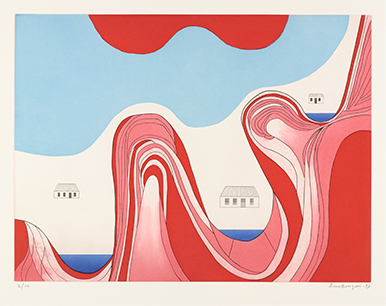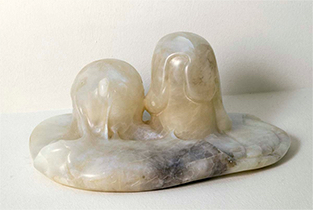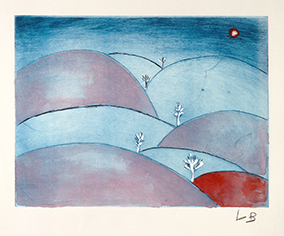Trees, flowers, nests, mountains, rivers, and clouds are among the elements of nature to which Louise Bourgeois looked for expressions of procreation, growth, and refuge, as well as unsettling states of mind. The natural terrain also became a metaphor for the human body. “It seems rather evident to me,” she said, “that our own body is a figuration that appears in Mother Earth.”
While growing up, Bourgeois and her siblings each had a garden plot where they planted roses and geraniums and tended to apple and pear trees. Later she explored the workings of nature with her own children at their country house in Easton, Connecticut. This preoccupation with the natural world shows itself in her work at various intervals, particularly in the 1960s, when she fashioned cocoons and lairs of plaster, and bulbous landscapes of marble, latex, and hardened plastics. This turn to mutable, biomorphic forms was in stark contrast to the rigid wood figures she created in the 1940s and 1950s, or the architectural structures that became her Cells series in later years.
Bourgeois’s prints, drawings, and illustrated books of the 1990s and 2000s are filled with references to nature. The Bièvre River in France is the subject of a book of abstract fabric collages, and Les Arbres, a series of six portfolios, mines the symbolic potential of mountains, trees, branches, and leaves in drypoint and watercolor. In 2008, an exhibition of Bourgeois’s work, titled Nature Study, took place in the Royal Botanic Gardens of Scotland, where it was coupled with 19th-century botanical drawings from the Gardens' archive.






